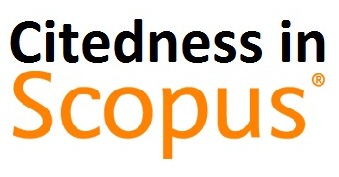Pneumonia Classification Utilizing VGG-16 Architecture and Convolutional Neural Network Algorithm for Imbalanced Datasets
DOI:
https://doi.org/10.38043/tiers.v4i1.4380Keywords:
Machine Learning, Classification, CNN, Pneumonia, VGG-16Abstract
This research focuses on accurately classifying pneumonia in children under the age of 5 using X-ray images, considering the challenge of an imbalanced dataset. A modified VGG-16 CNN architecture is evaluated for pneumonia classification in Chest X-Ray Images. The study compares testing results with and without data augmentation techniques and explores the potential application of the model in an Android-based machine learning system for pneumonia diagnosis assistance. Using a dataset of 5,856 Chest X-Ray images categorized as normal or pneumonia, obtained from Kaggle, the research conducts two test scenarios: one without data augmentation and another with data augmentation techniques. The modified VGG-16 CNN algorithm's performance is evaluated using the accuracy metric. The results highlight the effectiveness of data augmentation in improving pneumonia classification accuracy. The augmented tests outperform the non-augmented ones, achieving an impressive 92% accuracy, indicating a significant 15% improvement over the non-augmented scenario. This improvement underscores the efficacy of data augmentation techniques in enhancing the CNN's ability to accurately classify pneumonia, particularly when faced with an imbalanced dataset. Furthermore, the research explores the potential integration of the trained model into an Android-based machine learning system for pneumonia diagnosis assistance. This integration would enable doctors to analyze X-ray images and identify potential pneumonia cases in patients. The integration of advanced machine learning systems in healthcare holds promise for improving patient care and the accuracy of pneumonia diagnoses. In summary, this research contributes to the accurate classification of pneumonia in children under 5 years old using X-ray images. It emphasizes the efficacy of data augmentation techniques in enhancing classification accuracy and explores the practical application of an Android-based machine learning system for pneumonia diagnosis assistance. These findings underscore the importance of advanced machine learning systems in healthcare and their potential to improve pneumonia diagnosis accuracy and enhance patient care.
Downloads
References
Shao, Z., et al. 2020. “AI 2000: A Decade of Artificial Intelligence.” 12th ACM Conference on Web Science, Proceeding 2020 - July: 345-354. https://doi.org/10.1145/3394231.3397925
Pallathadka, H., et al. 2021. “IMPACT OF MACHINE learning ON Management, healthcare AND AGRICULTURE.” Mater Today Proceeding 2021-July,80: 2803-2806. 10.1016/j.matpr.2021.07.042
Destiawan, D, et al. 2018. “Implementasi Fuzzy Logic Pada Short Range Radar Untuk Pengamanan BT (Basis Tempur) Tingkat Regu.” Jurnal Teknik Elektro dan Komputer TRIAC 5 (2). https://doi.org/10.21107/triac.v5i2.4062
Bharati, S., et al. 2020. “Hybrid deep learning for detecting lung diseases from X-ray images.” Inform Med Unlocked. 20: 100391. https://doi.org/10.1016/j.imu.2020.100391
Sharma, H., et al. 2020. “Feature Extraction and Classification of Chest X-Ray Images Using CNN to Detect Pneumonia,” 2020 10th International Conf. on Cloud Computing, Data Science & Engineering, Proceeding 2020 - January: 227–231. https://doi.org/10.1109/Confluence47617.2020.9057809
Al Haromainy, M. M., et al. 2022. “Classification Of Javanese Script Using Convolutional Neural Network With Data Augmentation.” 2022 IEEE 8th Information Technology International Seminar (ITIS), Proceeding 2023-January: 288-291. https://doi.org/10.1109/ITIS57155.2022.10010262
Ksibi, A., et al. 2022. “Improved Analysis of COVID-19 Influenced Pneumonia from the Chest X-Rays Using Fine-Tuned Residual Networks,” Computer Intelligence Neuroscience: 1-13. https://doi.org/10.1155%2F2022%2F9414567
Mardlijah., et al. 2018. “OPTIMAL CONTROL OF NEUTRAL LIPIDS IN MICROALGAE PRODUCTION WITH NUTRIENT LIMITATION,” MATTER: International Journal of Science and Technology. 4 (1): 61-72. https://doi.org/10.20319/mijst.2018.41.6172
Sari, A. P., et al. 2022. “Forecasting Model of Wind Speed and Direction by Convolutional Neural Network - Deep Convolutional Long Short Term Memory.” 2022 IEEE 8th Information Technology International Seminar (ITIS), Proceeding 2023-January: 200-205. https://doi.org/10.1109/ITIS57155.2022.10010005
Riyantoko, P. A and Muhaimin, A. 2023. “A simple data sentiment analysis using Bjorka phenomenon on Twitter.” Nusantara Science and Technology Proceedings 33: 330-336. https://doi.org/10.11594/nstp.2023.3353
Fahrudin, T. M., et al. 2021. " KEBI 1.0: Indonesian Spelling Error Detection System for Scientific Papers using Dictionary Lookup and Peter Norvig Spelling Corrector." Lontar Komputer : Jurnal Ilmiah Teknologi Informasi 12 (2): 78-90. https://doi.org/10.24843/LKJITI.2021.v12.i02.p02
Maysanjaya, I. Md. D. 2020. “Klasifikasi Pneumonia pada Citra X-rays Paru-paru dengan Convolutional Neural Network.” Jurnal Nasional Teknik Elektro dan Teknologi Informasi. 9 (2): 190-195. https://doi.org/10.22146/jnteti.v9i2.66
Sari, A.P., Hiroshi Suzuki, Takahiro Kitajima, Takashi Yasuno, Dwi Arman Prasetya, and Rahman Arifuddin. (2022). “Short-Term Wind Speed and Direction Forecasting by 3DCNN and Deep Convolutional LSTM.” IEEJ Transactions on Electrical and Electronic Engineering, 17 (11):1620-1628. https://doi.org/10.1002/tee.23669
Sari A.P., D.A. Prasetya, M. M. Al Haromainy, F.P. Aditiawan, A. N. Sihananto, W. S. Saputra. 2022. Analisis Faktor Kesuksesan Penggunaan eBelajar Menggunakan Metode Hot-Fit di STIKI Malang. Seminar Nasional Sains Data (SENADA) 2022, prosiding 2022-November: 92-102. https://prosiding-senada.upnjatim.ac.id/index.php/senada/article/view/54/16
Yamashita, R., et al. 2018. “Convolutional neural networks: an overview and application in radiology.” Insights Imaging, 9 (4): 611–629. https://doi.org/10.1007/s13244-018-0639-9
Sari, A.P., et al. 2020. “Prediction Model of Wind Speed and Direction
using Convolutional Neural Network-Long Short Term Memory.” 2020 IEEE International Conference on Power and Energy (PECon) Proceeding 2020-December: 358-363. https://doi.org/10.1109/PECon48942.2020.9314474
Tu, X. et al. 2019. “Enhance the Motion Cues for Face Anti-Spoofing using CNN-LSTM Architecture.” Arxiv: Computer Vision and Pattern Recognition, 1-20. https://doi.org/10.48550/arXiv.1901.05635
Sari, A.P., Hiroshi Suzuki, Takahiro Kitajima, Takashi Yasuno, Dwi Arman Prasetya, and Abd. Rabi'. 2021. “Deep convolutional long short-term memory for forecasting wind speed and direction.” SICE Journal of Control, Measurement, and System Integration 14(2): 30-38. https://doi.org/10.1080/18824889.2021.1894878
Naseer, I., et al. 2022. “Performance Analysis of State-of-the-Art CNN Architectures for LUNA16.” Sensors. 22 (12): 4426. https://doi.org/10.3390/s22124426
Putrama Alkhairi and A. P. Windarto. 2023. “Classification Analysis of Back propagation-Optimized CNN Performance in Image Processing,” Journal of Systems Engineering and Information Technology (JOSEIT) 2 (1): 8-15. https://doi.org/10.29207/joseit.v2i1.5015
Purwono, P., et al. 2023. “Understanding of Convolutional Neural Network (CNN): A Review.” International Journal of Robotics and Control Systems 2 (4): 739-748. https://doi.org/10.31763/ijrcs.v2i4.888
Nugroho , B. and E. Y. Puspaningrum. 2021. “Kinerja Metode CNN untuk Klasifikasi Pneumonia dengan Variasi Ukuran Citra Input.” Jurnal Teknologi Informasi dan Ilmu Komputer 8 (3): 533-538. http://dx.doi.org/10.25126/jtiik.2021834515
Saputra, W. S. J., et al. 2022. “Car Classification Based on Image Using Transfer Learning Convolutional Neural Network.” 2022 IEEE 8th Information Technology International Seminar (ITIS), Proceeding 2023-January: 324-327. https://doi.org/10.1109/ITIS57155.2022.10010073
Nugraha, G. S., et al. 2023. “Comparison of CNN’s Architecture GoogleNet, AlexNet, VGG-16, Lenet -5, Resnet-50 in Arabic Handwriting Pattern Recognition.” Kinetik: Game Technology, Information System, Computer Network, Computing, Electronics, and Control. http://dx.doi.org/10.3390/electronics11111780
N. Wiranda and A. E. Putra. 2022. “Mobile-based Primate Image Recognition using CNN,” IJCCS (Indonesian Journal of Computing and Cybernetics Systems). 16 (2): 149-158. https://doi.org/10.22146/ijccs.65640
M. M. Al Haromainy, D. A. . Prasetya, and A. P. Sari, “Improving Performance of RNN-Based Models With Genetic Algorithm Optimization For Time Series Data”, TIERS, vol. 4, no. 1, pp. 16-24, Jun. 2023.
F. D. Marleny and M. Mambang, “Predictive Modeling Classification of Post-Flood and Abrasion Effects With Deep Learning Approach”, TIERS, vol. 3, no. 1, pp. 1-10, Jun. 2022.
Downloads
Published
How to Cite
Issue
Section
License
Copyright (c) 2023 Mohammad Idhom, Dwi Arman Prasetya, Prismahardi Aji Riyantoko, Tresna Maulana Fahrudin, Anggraini Puspita Sari

This work is licensed under a Creative Commons Attribution-ShareAlike 4.0 International License.





















